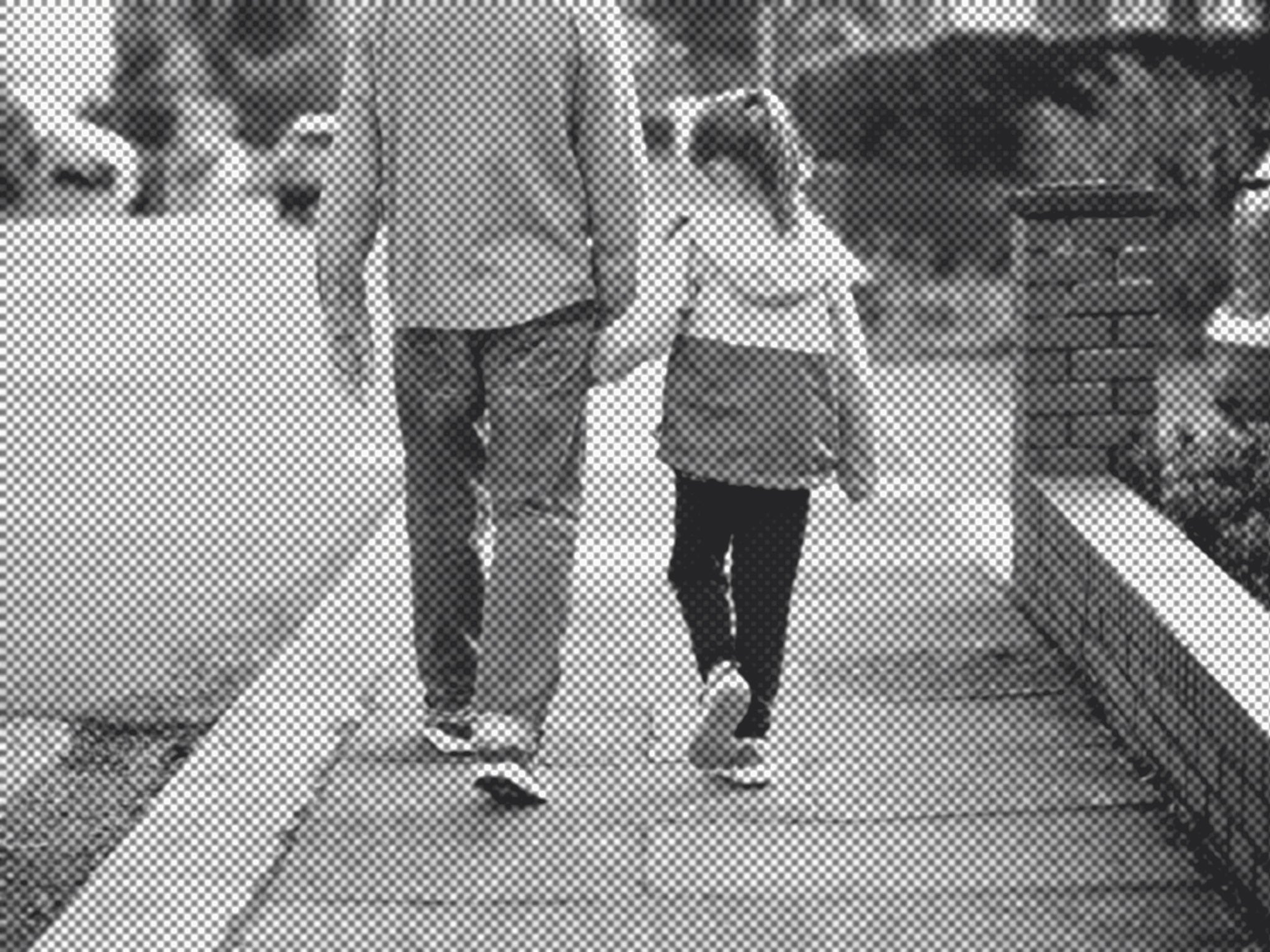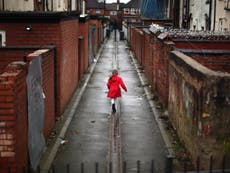The numbers behind Britain’s child poverty crisis
Children in crisis: Marcus Rashford has brought child hunger back into the public consciousness – but poverty goes far further for Britain’s young

Coronavirus has pushed tens of thousands of families – and in turn children – into dire situations. More youngsters than ever are relying on food banks to eat, while child protection referrals to local councils have surged since lockdown, with social workers warning that their caseloads are higher than ever.
Last week, the Equality and Human Rights Commission (EHRC) called on ministers to do more to protect children from the “devastating” impact of the pandemic, warning that it was exacerbating existing inequalities and having a devastating impact on their rights and wellbeing. It highlighted key concerns, such as more children being pushed into poverty, widening educational inequalities and worsening mental health.
School closures during the first lockdown exacerbated growing attainment gaps for disadvantaged groups, while those who already faced poverty are seeing their income reduced further. The mental health impact could also be severe and long-lasting, with The Independent revealing today that there’s been a rise in local authority referrals for children experiencing mental health issues.
Footballer Marcus Rashford put the spotlight on the plight of disadvantaged children during the public health crisis. Ministers may have rejected his call to make free school meals available to children during the October half term, but the Manchester United star’s crusade to ensure youngsters were fed pushed the government to announce support for families over Christmas, as well as generating a surge in community support.
But child hunger is the presenting issue for a much deeper problem which the country needs to confront, and free school meals during holidays will barely scratch the surface.
There are many statistics flying around on children living in poverty. Here are the figures that paint a picture of how the issue is playing out in the UK today.
4.2 million children in poverty
The latest government figures on child poverty, published in 2018/19, show 4.2 million under-16s live below the poverty line – 30 per cent of the UK’s child population.
This compared with 3.6 million – or 27 per cent – in 2011/12, meaning 600,000 more children were in poverty in the later period. More than half of these children – over two million – are aged under five, and a third are in single-parent families.
These figures were recorded before the pandemic hit. While the government has introduced some measures to soften the economic impact on families, such as the weekly £20 uplift on universal credit payments, experts say child poverty levels are likely to have increased during the public health crisis.
£17,160 poverty line for single parent families
There are different ways of measuring poverty. The one most commonly used one in the UK is “relative income poverty”, which sets the poverty line in the UK at 60 per cent of the median UK household income. In other words, if a household’s income is less than 60 per cent of the average, they are considered to be living in poverty.
The amounts vary depending on the size of a family. For a family of one adult and one child, 60 per cent of median income in 2018/19 is £13,936 a year. For one adult and two children it amounts to £17,160; for a family of two adults and one child, £19,240; and for a family of two adults and two children it amounts to £22,464 a year.
Sharpest rise in poorer areas
A report published by the End Child Poverty Coalition last month showed that London and Birmingham have the highest levels of child poverty in the UK, with more than half the children living below the poverty line in a dozen constituencies in both cities.
But child poverty has risen most sharply in parts of the Midlands and northern towns and cities in the past four years, with places such as Middlesbrough and parts of Tyneside seeing rates soar by over 10 percentage points since 2014/15.
In the past, low incomes in these areas were counteracted by cheaper housing costs, but during the five years leading up to 2018/19, rents in other parts of the country have risen by the same amount as in the capital. This means that in many places where incomes are being depressed, this is no longer likely to be offset by falling relative housing costs.
Seventy per cent of children in poverty have working parents
The government data shows that seven out of 10 children in poverty were in families where at least one parent was in work, which charities say indicates that work is not providing a reliable route out of poverty. The number of people in poverty across the whole UK workforce jumped from 10 per cent in 1998 to 13 per cent in 2018.
Research by the Joseph Rowntree Foundation this year found that single-parent families have been the worst affected. Working single parents accounted for three in 10 households in poverty in 2018, compared with two in 10 in 2011.
Benefits have lost a quarter of their value since 2010
Government statistics show that more than half of children whose families receive working-age benefits are living in poverty. Seven in 10 children in poverty live in families with no savings, and around one in four live in families who have bills in arrears.
Over the decade from 2010 to 2020, child benefit – paid to 12.7 million families with children – will have lost almost a quarter of its value simply because it has not been updated as prices have risen.
Charities say children have also been pushed into poverty – or further into poverty – through policies that have affected families the most. These include the benefit freeze, which froze working-age benefits for four years from April 2016, and the two-child policy, which prevents child allowance being paid for a third or subsequent child in a family, and affects around 300,000 families.
Research published by the Child Poverty Action Group in August found that parents are increasingly being forced to spend child benefit on bills and day-to-day living expenses. Polling by the charity showed 14 per cent of parents said they were spending the benefit on bills, up from 4 per cent in 2012, and 28 per cent of the 1,000 parents surveyed said they used the money for day-to-day living expenses – up from just 2 per cent in 2012.
A third of children in poverty in privately rented homes
An estimated 1.3 million children are living in poverty in privately rented homes in England, an increase of 537,325 children – 69 per cent – since 2008, according to research by the National Housing Federation in 2019. Nearly half (46 per cent) of all children in privately rented homes in England lived in poverty.
The findings showed that many parents were being forced to live in insecure private rented homes which they couldn’t afford, pushing them and their children into poverty, often due to high property prices and a shrinking proportion of social housing.
Poorer students are a year and a half behind their peers
Disadvantaged pupils are 18.1 months of learning behind their peers by the time they finish their GCSEs – the same gap as five years ago, according to the Education Policy Institute. In primary schools, the gap increased for the first time this year since 2007, up from 9.2 months in 2018 to 9.3 a year later.
This was before the coronavirus pandemic hit, ramping up concerns that it will only be getting worse following the months when children weren’t in school. According to the Children's Commissioner, nearly one in 10 children don’t have a digital device to do schoolwork at home – meaning many struggled to keep up with classes during the first lockdown.
Fears pandemic will put 200,000 more children in poverty
In June, IPPR researchers found it was highly plausible that over one million more people would be under the poverty line compared to a situation where the pandemic had not occurred, including 200,000 children, by the end of the year.
The think tank said that in order to prevent this from happening, the government should – as a pre-requisite – remove the two-child limit and benefit cap. It said the emergency increase to the universal credit standard allowance and tax credits should also be retained beyond the end of the year and further increases are needed to the universal credit child element and child tax credits.
Separately, a survey by Child Poverty Action Group published in August found that eight in 10 low-income families were financially worse off as a result of the pandemic, usually due to job losses and/or the fact that they were having to spend more on food, electricity, and other essentials due to spending more time in the home.
Another indication that the pandemic is exacerbating child poverty is the fact that the number of children having to rely on food banks more than doubled during the last two weeks of March – the start of the first lockdown – compared to the same period in 2019.



Join our commenting forum
Join thought-provoking conversations, follow other Independent readers and see their replies
Comments